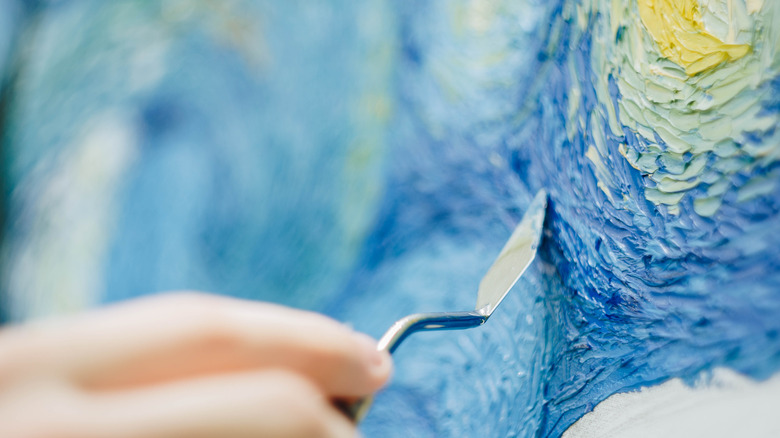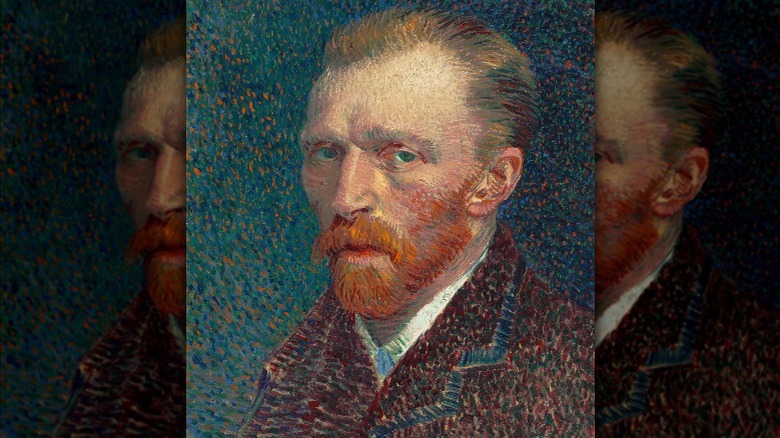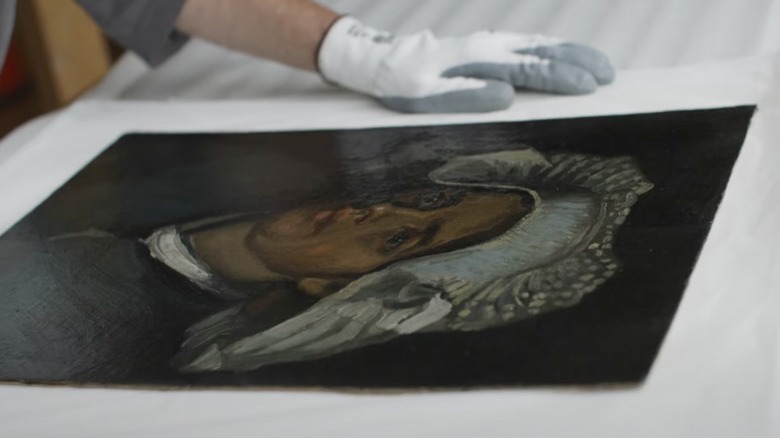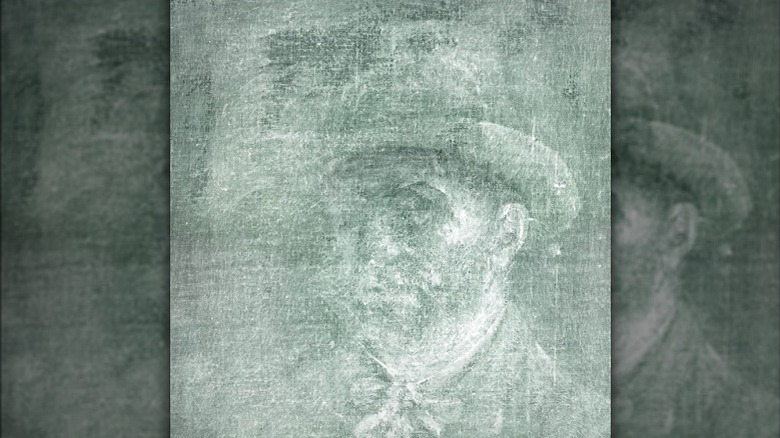Secret Van Gogh Painting Shakes Up The Art World
Vincent Van Gogh's catalog is still increasing to this day, an impressive feat for the legendary Dutch artist who has been dead for more than 130 years (via Biography). In July 2022, a previously hidden self-portrait was found on the back of another one of Van Gogh's paintings at the National Galleries of Scotland in Edinburgh. According to the BBC, the painting that the self-portrait was hidden behind is one called "Head of a Peasant Woman" which, as its name, depicts exactly that.
The self-portrait was only discovered after "Head of a Peasant Woman" was X-rayed, with the self-portrait hidden under layers of glue and cardboard. "When we saw the X-ray for the first time, of course, we were hugely excited," Lesley Stevenson, senior conservator at National Galleries of Scotland said. "This is a significant discovery because it adds to what we already know about Van Gogh's life."
Van Gogh's work did not sell well before his 1890 death at the age of 37, but since then, he has become one of the most famous artists in history, which makes such a discovery a major breakthrough in the art world.
Van Gogh's career
Vincent Van Gogh was born in Groot-Zundert, Netherlands on March 30, 1853. His father was a minister — a line of work Van Gogh found himself in at one point in his life — while his mother, Anna Cornelia Carbentus, was an artist. It's thought that her drawing and painting abilities and her love of nature were highly influential on her son and his own career, per Biography.
Due to his family finding themself in dire financial straits, Van Gogh left school and went to work at his uncle's art gallery in The Hague, Netherlands. After working at his uncle's gallery for several years, Van Gogh moved to London and took a job at the Groupil Gallery in 1973. Fortunately for the then-20-year-old Van Gogh, he spoke fluent English in addition to French, German, and his native Dutch.
According to The Van Gogh Gallery, after some time in his father's line of work, Van Gogh realized he was meant to be an artist and started studying in Belgium. Eventually, he found himself in Paris and started learning the works of impressionist painters like Monet and Gauguin. Tragically, a large part of the end of Van Gogh's life was spent in an asylum, and he died of what is believed to have been a self-inflicted gunshot wound.
If you or anyone you know is having suicidal thoughts, please call the National Suicide Prevention Lifeline at 1-800-273-TALK (8255)
Head of a Peasant Woman
According to the National Galleries of Scotland, "Head of a Peasant Woman" is a 46.4 x 35.5 centimeters (18.3 x 14 inches) painting of exactly what's on the label, a portrait of a peasant woman from the shoulders up. It was painted using oil on canvas and is thought to date to around 1884. It was painted during Van Gogh's time living in Nuenen a town in the southern part of the Netherland. The "Head of a Peasant Woman" artwork was one of approximately 40 similar paintings that Van Gogh did around this time. His time in Nuenen lasted nearly two years, from December 1883 to November 1885.
Even before a self-portrait was discovered attached to the "Head of a Peasant Woman" it had an interesting journey to the National Gallery in its own right. According to the BBC, after having several owners, the painting fell into the care of Evelyn St. Croix Fleming, in 1923. If her name doesn't ring a bell, her son's name, Ian Fleming — the man who created James Bond — will. By 1951, the painting traveled north to Scotland and was in the collection of a lawyer who eventually donated it to the National Galleries of Scotland in 1960 where it has been ever since.
Discovery and significance
"Head of a Peasant Woman" was in The National Galleries of Scotland's collection for more than 60 years before the team there made an incredible discovery. X-rays revealed a Van Gogh self-portrait beneath the original painting. It's thought that Van Gogh started working on the self-portrait after he moved to Paris and started studying the work of the impressionists. According to the BBC, Van Gogh was known to repurpose canvases as a way of saving money.
Senior curator at the National Galleries of Scotland, Professor Frances Fowle gushed over the discovery. "Moments like this are incredibly rare. We have discovered an unknown work by Vincent van Gogh, one of the most important and popular artists in the world," Fowler said.
It's thought that the cardboard that covered the self-portrait was applied during one of the canvas' first stops at the Stedelijk Museum in Amsterdam, where it was acquired in the early 20th century. Similar discoveries have been made on the back of canvases from Van Gogh's time in Nuenen.



